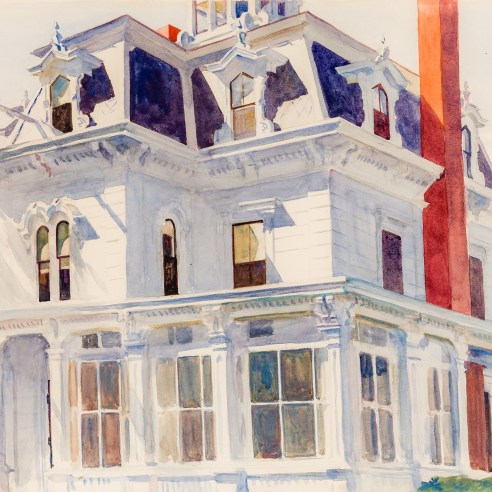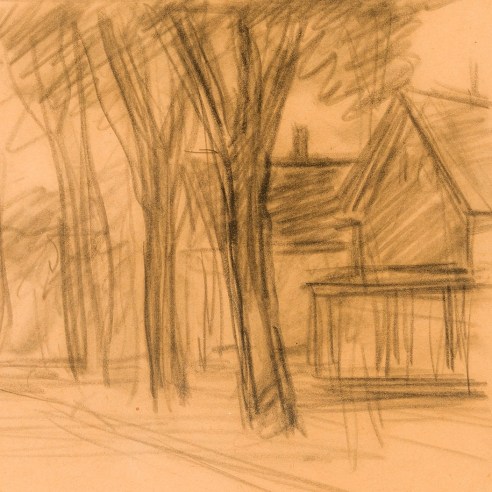
In the early 1920s, Edward Hopper was a struggling artist who was forced to earn a living through commercial art and illustration. His only one-man show was in 1920 at the Whitney Studio Club, a venue founded by Gertrude Vanderbilt Whitney, the great New York collector, sculptor, patron of native realist artists, and later the founder of the Whitney Museum of American Art. It is notable that none of the paintings in the exhibition, all of which were of French subjects, sold. Not surprisingly, Hopper’s outlook on life during this time was mostly cynical and unfulfilled.
Hopper’s fortunes changed in 1923 when, while summering in Gloucester, he began to paint the local landscape in watercolor, a medium he had mostly eschewed since his days as a student at Robert Henri’s New York School of Art. Considering his relative unfamiliarity with watercolor, it is a testament to Hopper’s natural talents that he so quickly mastered the tricky medium, producing a number of wonderful watercolors characterized by a deft hand and the use of an extraordinary, limpid light. Six of these works were exhibited at The Brooklyn Museum, New York, later that year, where they attracted favorable critical attention. Royal Cortissoz, the notable New York art critic, declared that Hopper’s watercolors were “exhilarating” and that “we rejoice that he is using the medium” (“A Fine Collection at The Brooklyn Museum,” New-York Tribune, November 25, 1923, p. 8, as quoted in Gail Levin, Catalogue Raisonné, vol. 2, p. 37). Following this success, Hopper embarked on a productive streak in which he executed several important watercolors. Levin posits that Hopper was urged to experiment with watercolor by his female friend, soon-to-be-wife, Jo Nivison, an artist who, at the time, was exhibiting a group of watercolors she painted in Provincetown, Massachusetts, the previous summer. Nivison herself had been asked to contribute six watercolors to the exhibition at The Brooklyn Museum. She brought Hopper to the museum’s attention, which prompted his inclusion in the exhibition. Hopper and Nivison married on July 9, 1924, and returned to Gloucester for the summer. Hopper worked prodigiously that summer, painting at least twelve watercolors of Gloucester scenery, eight of which were of Gloucester’s characteristic Victorian houses. This essentially inaugurated what was to become a long fascination with the houses of Gloucester, which now form one of the most distinctive portions of Hopper’s long and varied career.

